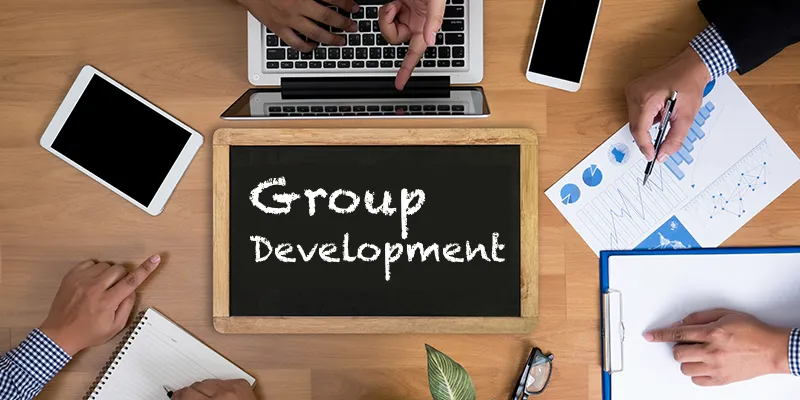The 4 stages of organisational group development
Every organisation involves team work and group development. It is only by the virtue of healthy group development that a team can be efficient and successful. The team can comprise of several people with diverse backgrounds and skills but with the same goals. They work together to achieve the goals set for the betterment of the team as well as the organisation. Hence, it is paramount to understand the mechanics of group development and utilise this learning to foster better relationships within the team.

Psychologist Bruce Tuckman proposed a theory for the various stages of group development in an organisation in 1965. According to him, all these phases are necessary and inevitable for a team to grow, face challenges, tackle problems, find solutions, plan work and deliver results. These phases are briefly explained below:
Forming
The first stage of group development, it involves getting the team members acquainted with the objective as well as with each other. Members attempt minor ice-breaking sessions with one another to gauge similarities, dissimilarities, strengths and weaknesses to understand how favourable or unfavourable the working conditions will be. Conflicting ideas are generally avoided in this stage. First impressions go a long way in influencing people in this stage.
Storming
After the team has successfully ‘formed’, the ‘storming’ stage begins. This involves a brainstorming session to decide upon the rules, ethics, task delegations, hierarchy, responsibilities, goals and timelines, criteria for evaluation and reward systems. In this stage, there might be conflicts over leadership, structure, power and authority. This stage usually proves to be one of the most common workplace stress triggers.
Norming
The main feature in this stage is the cohesion between team members. The team members are now willing to accept ideas, opinions, facts and figures, procedures and solutions from one another. There is a sense of group belonging and a feeling of relief as a result of resolving interpersonal conflicts. This stage is crucial for the working of an effective team.
Performing
When a group successfully completes the four stages mentioned above, it reaches the ‘performing’ stage, characterised by team spirit, unity and high efficiency. Every team member is well aware of their respective role and contributes to the common cause. Work progresses smoothly owing to the team’s problem solving skills and determination.
Like Tyler Norwood, Global Business Development Manager of Global Fashion Group, said, “Your company is not the technology you built. It’s not the top line or the bottom line. Your company is not the marketing campaign you run or the deck you made to raise money. Your company is your team.”
Adjourning
This stage was added in later 1977. Adjourning involves formally announcing the disengagement from relationships and termination from tasks. This also serves as a phase to acknowledge the contribution of every team member, reward the commendable performers and give tips to the low performers.
Now that you know about the various stages of team development, take a look at your team and decide what you’re meant to do. Ensure that you enforce the right opportunities to create an atmosphere that is conducive for coordinated work and successful execution of your goals.







